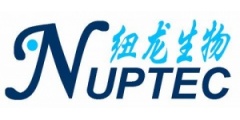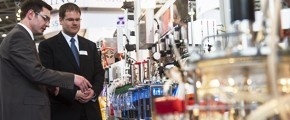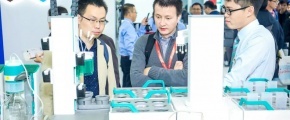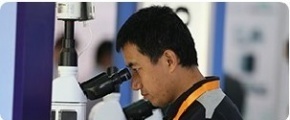Recombinant Protein G Sepharose (ProG Sepharose)
Product Name: Recombinant Protein G Sepharose (ProG Sepharose)
Catalog Number: NRPB02L, NRPB02S (prepacked column)
Packing Details: 10 ml, 100 ml, 1L, 1 ml (prepacked column), 2 ml (prepacked column), 5ml (prepacked column), 10ml (prepacked column)
Introduction:
Protein G is a bacterial cell wall protein expressing at the cell surface of some group C and group G Streptococcal strains. Protein G binds specifically to Fc regions of many mammalian immunoglobulins and is commonly used as affinity adsorbent to purify immunoglobulins (antibodies) and immunoglobulin subtypes from serum, hybridoma ascites, tissue culture supernatants and other biological fluids.
Column Characteristics:
Support 6% highly cross-linked spherical agarose
Ligand recombinant protein G
Ligand Density (mg/ml) >4
Particle Size (μm) 45~165
Flow Rate-Recommended/Maximum (cm/h) 100/750
pH Limits-Working/Cleaning 3~9/2~10
Maximum Operating Pressure (MPa) 0.3
Capacity ≥35 mg/ml IgG
Storage 4 oC to 8 oC in 20% ethanol
Some Typical Binding and Elution Conditions with Protein A Sepharose:
Species Antibody Class Protein G binding pH value of binding buffer pH value of elution buffer
Human IgG1 +++ 6.0~7.0 3.5~4.5
IgG2 +++ 6.0~7.0 3.5~4.5
IgG3 +++ 8.0~9.0 ≤7.0
IgG4 +++ 7.0~8.0 2.5~4.5
Cow IgG2 +++ 7.0~8.0 2.0
Goat IgG2 +++ 7.0~8.0 5.8
Mouse IgG1 ++ 8.0~9.0 5.5~7.5
IgG2a +++ 7.0~8.0 4.5~5.5
IgG2b +++ 7.0 3.5~4.5
IgG3 +++ 7.0 4.0~7.0
Rat IgG1 + ≥9.0 7.0~8.0
IgG2a +++ ≥9.0 ≤8.0
IgG2b + ≥9.0 ≤8.0
IgG2c ++ 8.0~9.0 3.0~4.0
Rabbit IgG +++ 7.4 2.7~4.0
“+” represents the binding strength
Performing a separation:
Binding buffer: 20 mM phosphate buffered saline, pH 7.4
Elution buffer: 100 mM glycine-HCl buffer, pH 2.7
Neutralization buffer: 1M Tris-HCl, pH 9.0
1) Wash the prepacked 1 ml column with 5~10 column volumes of distilled water to remove 20% ethanol.
2) Equilibrate the column with 5~10 column volumes of binding buffer.
3) Dilute 5 ml rabbit serum with binding buffer to 50 ml. Filtrate the diluted serum through a 0.45 μm filter and load the sample.
4) Wash with 5~10 column volumes of binding buffer.
5) Elute with 5 column volumes of elution buffer and neutralize collect fractions with neutralization buffer.
6) After each separation cycle, regenerate the resin by washing with approximately 3~5 column volumes of 0.1 M citrate buffer (pH 2.7).
7)Confirm the purity of the collected antibody by SDS-PAGE analysis (Figure 1, >95% purity).































